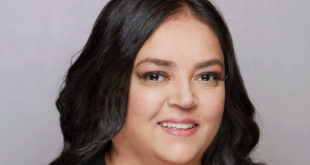By Arjun Singh
As an immigrant, one of the first things you have to do after landing is to open a bank account. Only after having a bank account in Canada can you proceed with other applications for services to settle down here. The banking system, products and regulations between banks in your home country and Canada are very different. As an immigrant living in Canada for just over 3 years, I would like to share some of my personal experiences with everyone. When I was fresh off the boat, I paid for bank charges I could have avoided had I known enough about how the banks work in Canada.
The Opening Scene
If you’re in Canada already, it’s better to visit a bank’s branch in person to open an account. For a permanent resident, you have to bring your permanent resident card and passport with you. For foreign worker, please bring your work permit and passport. During the account opening, the branch manager will inquire about your banking needs. If you’re unsure about any technical banking term, don’t be shy to ask for a clarification. Make sure you understand everything that’s included in your account and how charges are incurred. If you don’t look at your bank statements in detail, or are uncertain about the description or short form shown in your statement, you might be charged with some unexpected fees for a while.
Be Monthly Fee Free
Banks in Canada have bank plans based on 2 types of account, chequing account and savings account. A chequing account can be used to handle daily financial activities like cheque payments and debit card purchases. A savings account earns interest for your money. A monthly fee is applied by the 5 largest banks in Canada to their chequing account. The fee is around $10 – $30, costing hundreds a year. The monthly fee can be waived for most banks if your chequing account is higher than the minimum maintaining balance required, normally around $3,000 – $4,000. Please note that if you don’t meet the minimum balance even for a single day, you still have to pay the monthly fee. Also, kindly note that the monthly fee that may be charged to your chequing account will be much higher than the interest earning of a savings account if you had one instead!
Limit Your Transactions
You may have noticed the transaction limit of your bank account. What counts as a transaction? An ATM withdrawal, a debit card purchase, even a money transfer from your a savings to a chequing account, are considered as one transaction. Thus, knowing how many free transactions your bank plan comes with and staying within those limits will save you from a transaction fee.
Don’t Pay for Your Reward
Canadian banks usually offer attractive gifts like iPads, cash, or TVs, to attract bank account opening. If you’re interested in these promotions, be sure to read the fine print (called disclaimers) of the ads carefully, and make sure that you understand and can fulfill their requirements. For instance, some may require you to keep a minimum daily balance of $3,000 – $5,000 to waive the monthly fee. In addition, you have to set up a direct deposit or a recurring pre-authorized payment. For newcomers, kindly note that these conditions are not easily met. Recurring direct deposit requires an employer that pays your salary by payroll. For pre-authorized payment, some banks require owning an investment account and then setting up a monthly payment from your chequing account to the investment account. Some banks may request you to apply for a specific credit card. However, you have to get approval of the credit card application to be eligible for the offer. There’s a deadline too, for meeting these conditions, to be eligible for the gift failure to do so forfeits your eligibility to receive the gift. Even if you’re able to meet the requirements, be aware of the monthly fee and account maintaining balance, and that you won’t receive your gift immediately as these promotions require to keep your account for a certain period of time, usually the requirement is one year.
Plan your Account
Together with their promotions, banks also usually offer a special plan with free banking for newcomers. You could save $100 – $200 a year, depending on the offer period of the free monthly fee of each bank. I have seen banks offer 6 months, 9 months or even 1 year free banking. Using BMO’s NewStart™ Program as an example, it provides 1 year free chequing account ( the monthly fee is $14.95, that means savings of almost $180 for one year). The 1 year free banking comes with a small safety deposit box for storing cash, jewelry or other valuable assets, unlimited transactions and free unlimited e-transfers. This plan also feature easier eligibility requirements for newcomers. There is no minimum maintaining balance, no need to set up a direct deposit or pre-authorized payment. Offers like these are very practical and sensible for newcomers.
There is a length of stay eligibility requirement for newcomers, though. Some banks accept applicants who have arrived in Canada within 1 to 3 years; the BMO’s NewStart™ program mentioned above accepts landed immigrants and foreign workers who arrived in Canada within the last 5 years. If you are interested to learn more about the program, please visit bmo.com/newcanadians for more details.
A better future is what brought most of us here and taking care of our hard-earned money should be one of our priorities. Knowing which banking plan best suits our needs and avoiding unnecessary charges should help towards that goal.
 Desi Today Magazine
Desi Today Magazine




